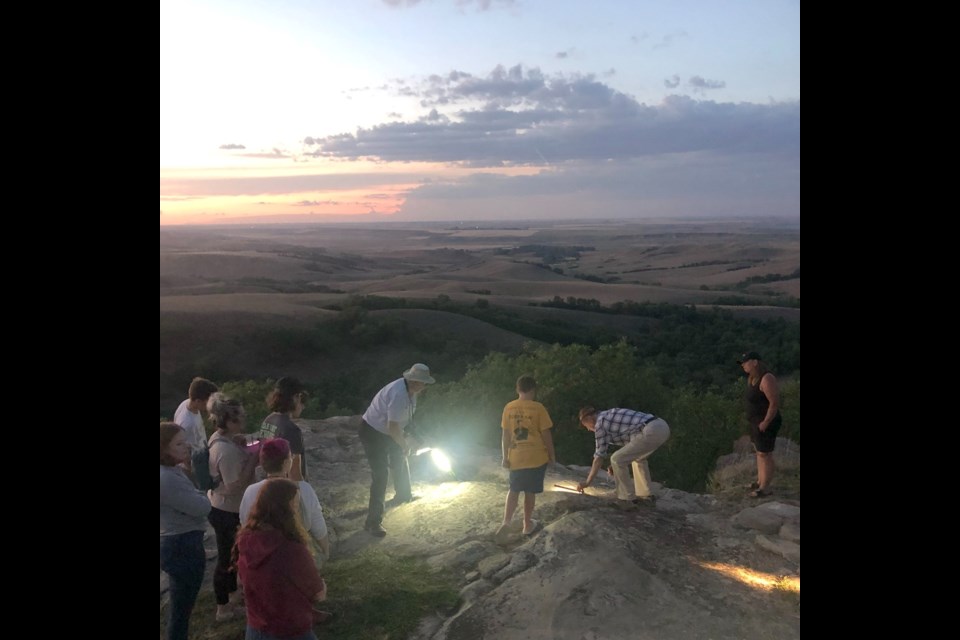ST. VICTOR — The St. Victor Petroglyphs Interpretive Centre and Museum helps tell the story of the site’s importance and the history of the symbols, which archaeologists believe date back roughly 1,700 years.
Of the 364 glyphs found at the site — located about 30 kilometres southeast of Assiniboia off Highway 2 — none are related to the horse, which suggests that Aboriginal people carved the designs before horses arrived on the plains in 1750.
Some experts believe some petroglyphs date back to the 1200s AD, while others think the stone-carved drawings originated around 300 AD. While there is no definite dating of the site or when Aboriginal peoples made the carvings, archaeologists believe the drawings belong to the ancestors of the Siouan-speaking tribes.
Glyphs are carvings of human feet, hands, faces, animal tracks, designs and symbols. Using stone and wood tools, Aboriginals drilled, carved and pounded out the symbols. The glyphs tell the relationship between man and animals, living in harmony over centuries.
The interpretive centre uses 10 colourful panels to tell the story of the site’s importance, the petroglyphs’ history, and the site’s future. Also on display are exhibits of how Aboriginal people used the bison, a replica of endangered glyphs, a display of Mortlach pottery — created between the years 1250 and 1750 — and worked bone, bone tools and stone tools.
The centre is located in a log structure from the former Moose Jaw Wild Animal Park and is called the Monarch Lodge, named after the “monarch of the plains,” the Plains Grizzly, and the Monarch butterfly.
The petroglyphs are located within the provincial heritage park, an area First Nations consider to be a sacred place because of the “living stones” there. The glyphs are on the flat surface of an outcropping of sandstone on the upper level of the Missouri Escarpment about 2.5 kilometre south of St. Victor.
From the plateau’s top, visitors can look out over the prairie landscape 700 feet below. The water channel that the last glacier cut through the area and the deep coulee system likely provided a source of shelter and plants for Aboriginal people for centuries.
While tourists can visit the site at any time and view a magnificent vista, the best time to see the glyphs is in the late afternoon or early evening. This is when the shadows grow longer and it’s easier to see the carvings.
The centre and museum are open in July and August from 10 a.m. to 5 p.m., Wednesday to Sunday.
Friends of St. Victor Petroglyphs offers tours throughout the summer. Visitors can join a late evening tour or can arrange for a special tour after dark to experience the carvings up close with the assistance of special lighting.
Tickets are $10 for everyone over 16 years old. Bus tours should inquire about special rates.
To arrange a tour, call . The website is .
This story has been updated to clarify admission and phone number.





